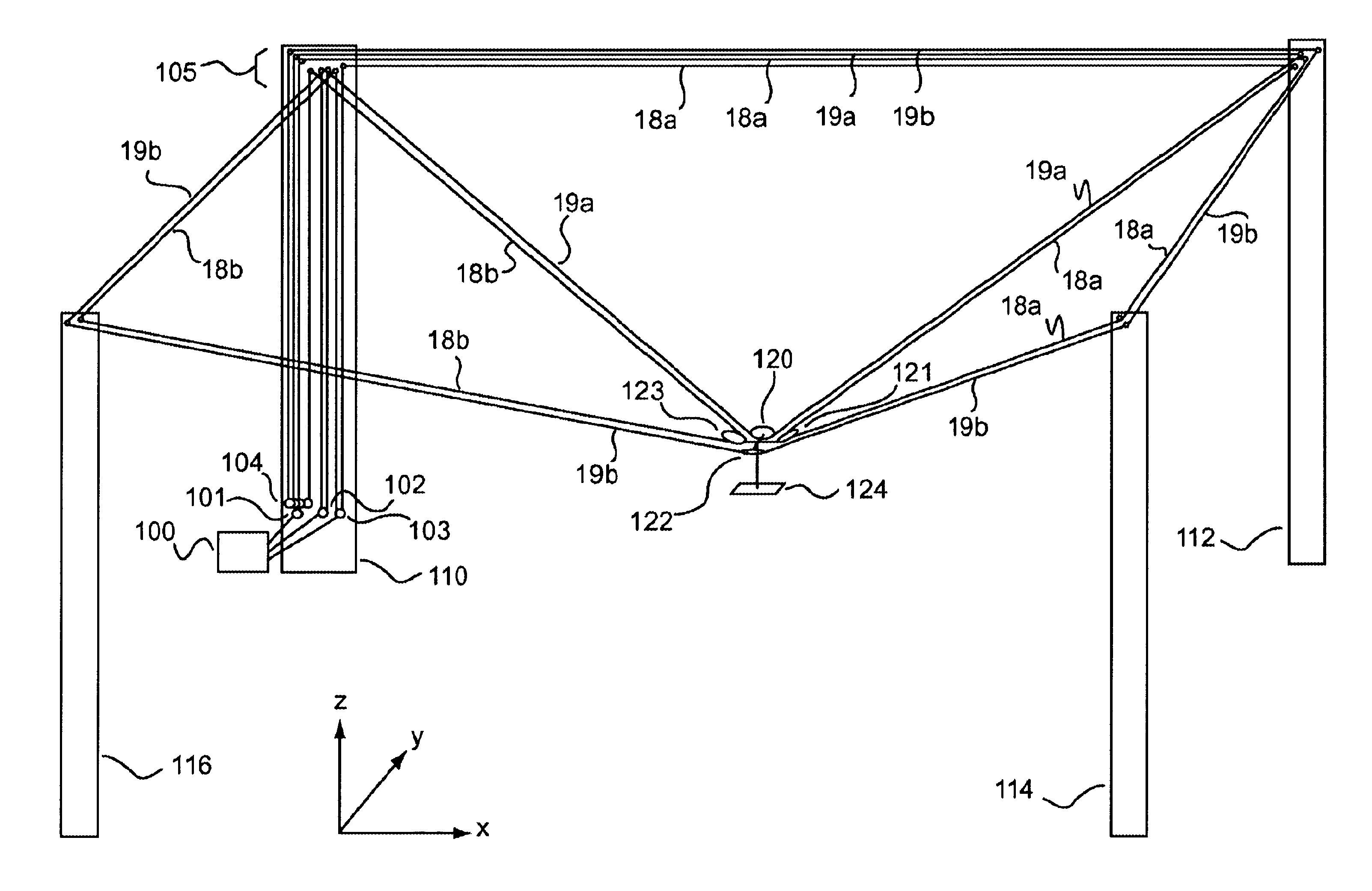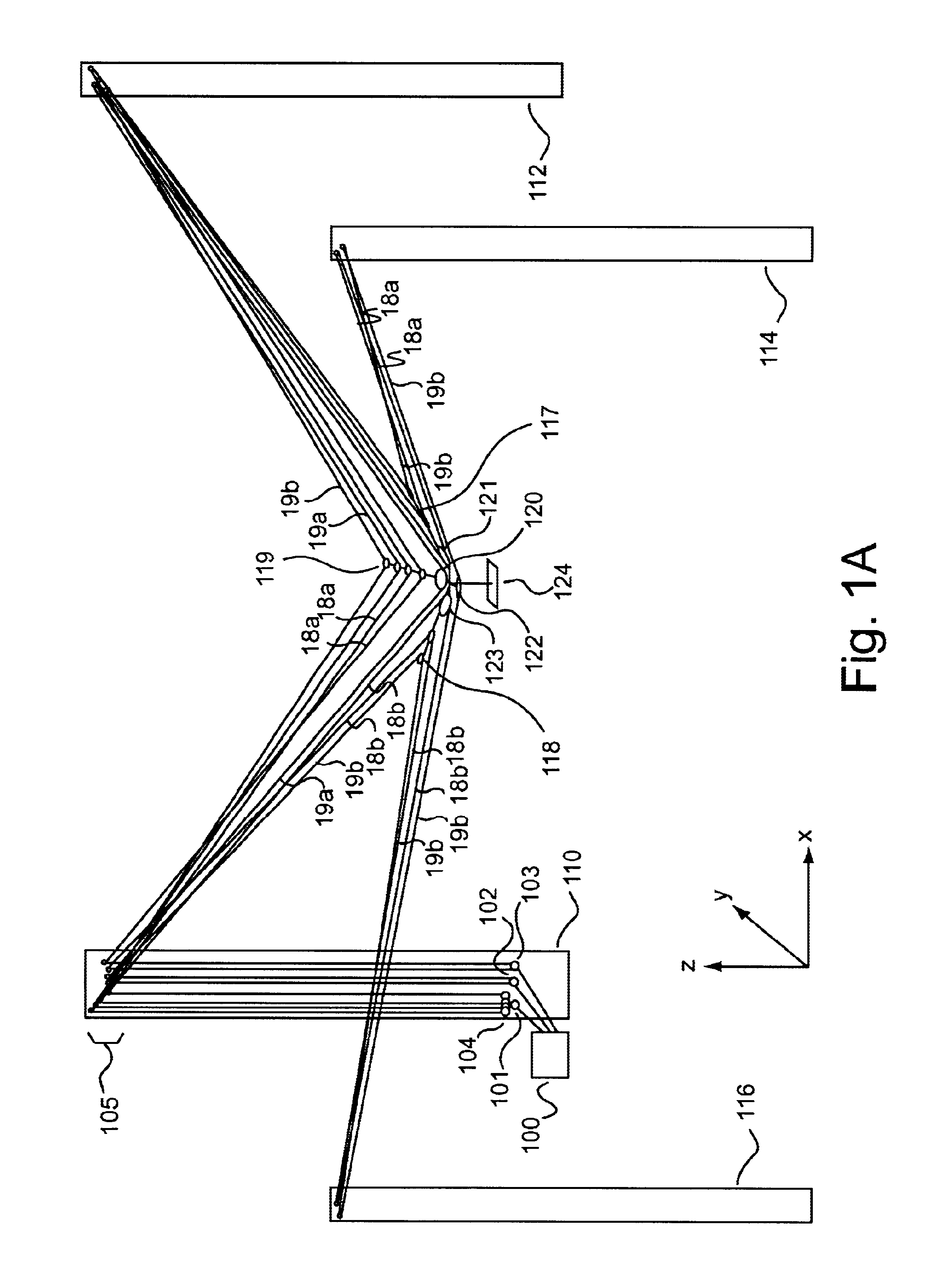System and method for facilitating fluid three-dimensional movement of an object via directional force
a three-dimensional movement and directional force technology, applied in the field of aerial cable rail systems, can solve the problems of inability to achieve the full spectrum of platform stability, and inability to allow for simple control of the cables in the system
- Summary
- Abstract
- Description
- Claims
- Application Information
AI Technical Summary
Benefits of technology
Problems solved by technology
Method used
Image
Examples
Embodiment Construction
[0075]Embodiments of the invention are ideally suited for moving objects through three-dimensional space using one to more lines. Various embodiments of the invention are capable of positioning an object such as a human, animal, mining implement, logging implement, manufactured object or any other useful object. Embodiments of the invention may, for example, be used in filming movies, sporting events, or any other activity that benefits from fluid movement of a camera or other object to any position within a defined volume of space.
[0076]In the following description, numerous specific details are set forth to provide a more thorough description of embodiments of the invention. It will be apparent, however, to one skilled in the art, that the invention may be practiced without these specific details. In other instances, well known features have not been described in detail so as not to obscure the invention. However, in each instance the claims and the full scope of any equivalents a...
PUM
 Login to View More
Login to View More Abstract
Description
Claims
Application Information
 Login to View More
Login to View More - R&D
- Intellectual Property
- Life Sciences
- Materials
- Tech Scout
- Unparalleled Data Quality
- Higher Quality Content
- 60% Fewer Hallucinations
Browse by: Latest US Patents, China's latest patents, Technical Efficacy Thesaurus, Application Domain, Technology Topic, Popular Technical Reports.
© 2025 PatSnap. All rights reserved.Legal|Privacy policy|Modern Slavery Act Transparency Statement|Sitemap|About US| Contact US: help@patsnap.com



